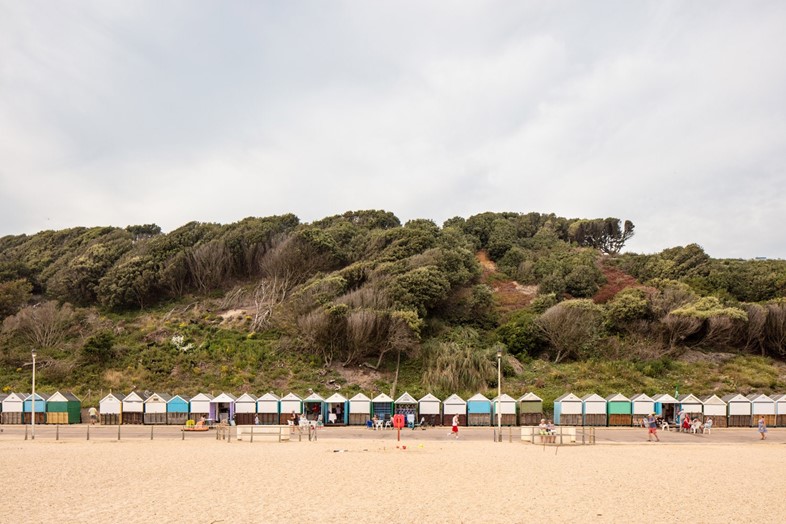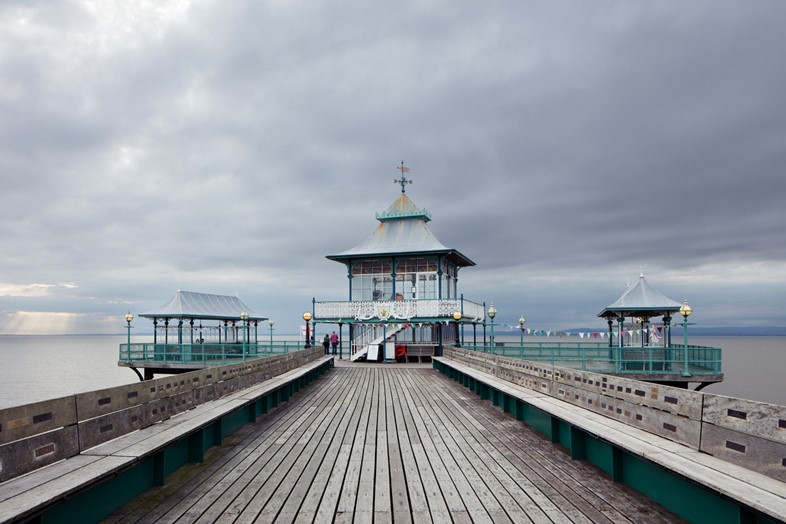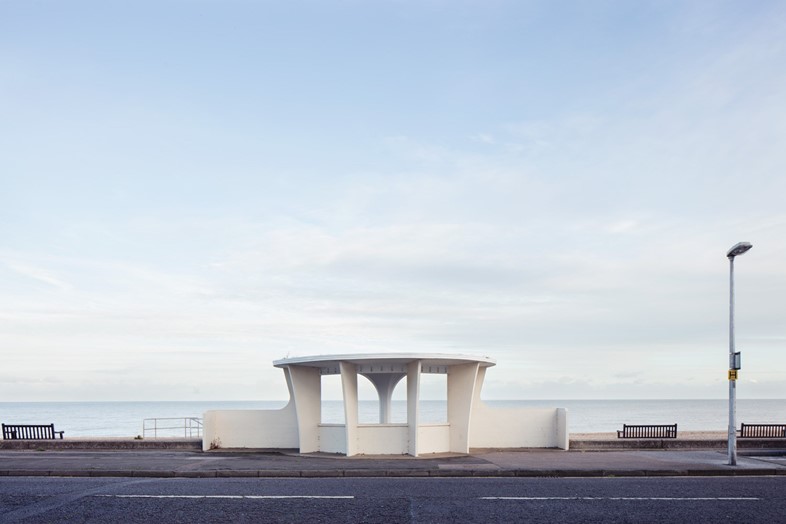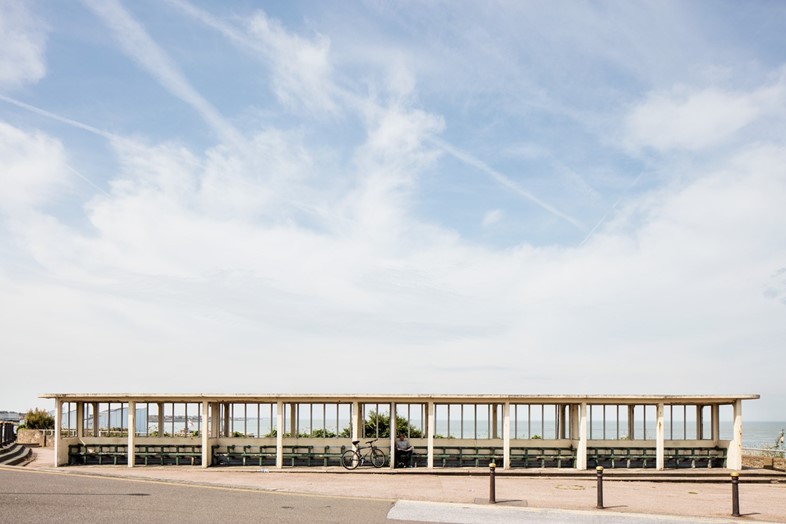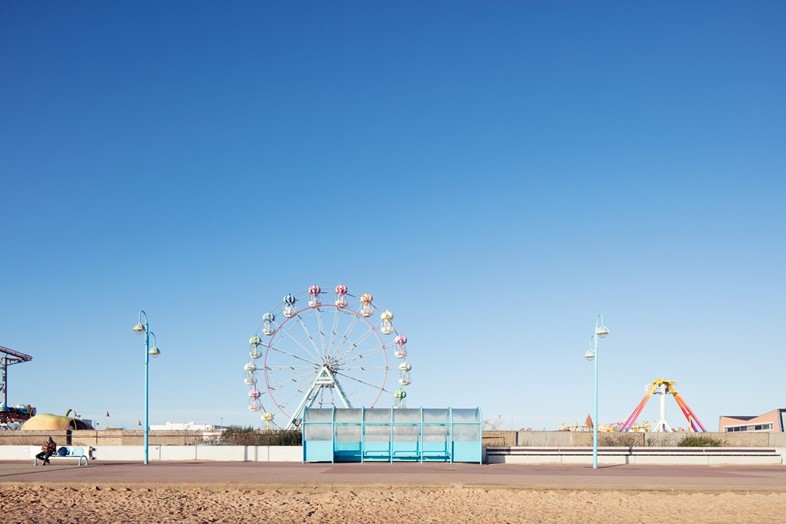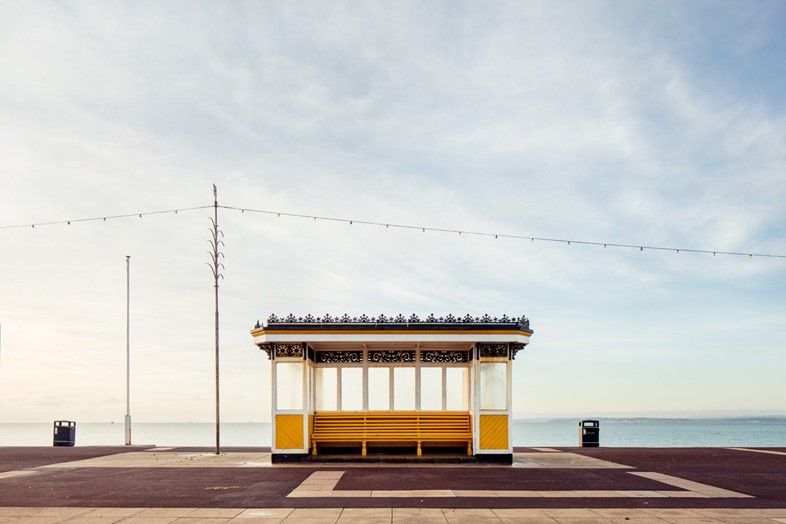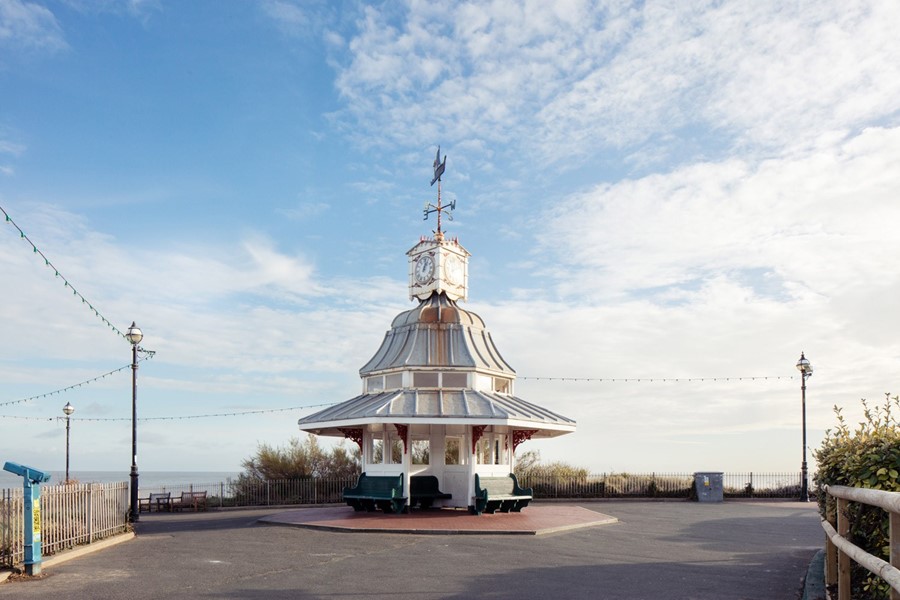British weather, particularly British summer weather, is notoriously temperamental: a heavy downpour followed promptly by beaming rays of sunshine is a regular occurrence. Seafront shelters have for many years been – and continue to be – merciful places of refuge for those spending their days in England’s coastal towns.
Will Scott’s series Seaside Shelters is a photographic tribute to these quintessentially British sanctuaries. Having spent the past few years journeying across the UK to capture Britain’s coastal areas, the Scottish photographer now tells their tales through his new book Seaside Shelters and an exhibition of the same name, currently on at HENI Gallery. The series is an unapologetic celebration of the buildings’ unique ornamentation, and serves as a much-needed reminder of the architectural, artistic and cultural value that these public service spots hold.
“I can’t really remember what the initial source of inspiration was,” Scott tells AnOther. “I just remember going to have a look at a shelter near a job I was doing and thinking it would make a great series. I shot a handful on the South coast and quickly realised I was onto something.” From Blackpool to Bangor, Exmouth to Cromer, Isle of Wight to Paignton, Scott’s travels have lead to an impressive archive of photographs that shine a light on the surprisingly diverse nature of coastal refuges. Seaside Shelters is exemplar of a cultural curiosity that invites us to look at familiar buildings through a new lens, whether it’s a Victorian shelter in Blackpool, an Art Deco-inspired sanctuary in Hastings or a minimalist construction in Deal. It invites us to reimagine commonplace spaces as artistic creations.
But the seaside shelter reflects much more than a weekend away spent on the pier eating 99p Flakes. It represents a world-view, one that democratically invites the public – whoever they are, whatever their circumstances – to spend time inside the construction. “They are unique, unassuming but proud,” Scott says. “As Edwin Heathcote writes in the book’s introductory essay, they are structures for everyone to do anything they want. You don’t have to spend any money in them. There are very few places like that these days.” Heathcote goes on to identify the shelters as products of the mid-19th century railway age when travel was made cheap and coastal destinations accessible.
Scott’s Seaside Shelters series is set against vast, boundless skies, highlighting the inextricable relationship between the buildings and the British weather: “obviously you want the individual shots to be good – some nice light and dramatic skies always help”. Yet this emphasis on the surrounding natural landscapes also lends the shelters a sublime significance. The most important element of the book for Scott is not simply the documentation of these forgotten refuges. It is that, in so doing, the photographer elevates the nostalgic locations into poetic artefacts that demand our attention and admiration.
Seaside Shelters by Will Scott is out now, published by HENI Publishing. The corresponding exhibition runs un August 19, 2018 at HENI Gallery, London.

